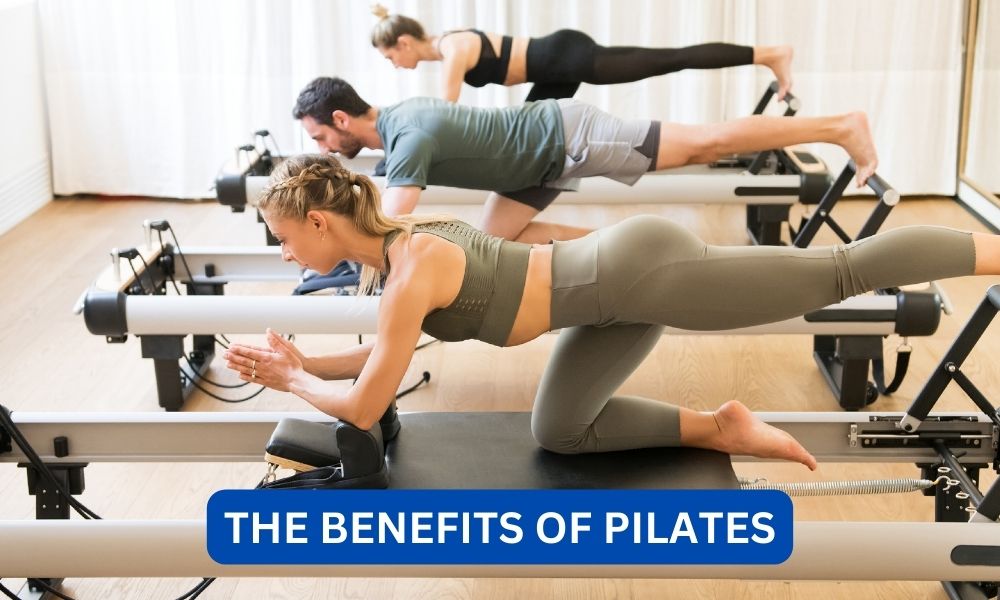Pilates has gained immense popularity in recent years as a form of exercise that not only improves physical fitness but also promotes mental well-being. Developed by Joseph Pilates in the early 20th century, this low-impact workout has been embraced by people of all ages and fitness levels. From celebrities to athletes, everyone seems to be incorporating Pilates into their fitness routine. But what exactly is Pilates and what are its benefits? In this article, we will delve into the world of Pilates and explore its numerous benefits for the mind and body.
Contents
What is Pilates?
Pilates is a form of exercise that focuses on strengthening the core muscles, improving flexibility, and enhancing overall body alignment. It involves a series of controlled movements that are performed on a mat or using specialized equipment such as the reformer, Cadillac, and Wunda chair. The exercises in Pilates are designed to target specific muscle groups, with a strong emphasis on the core muscles, including the abdominals, back, and pelvic floor.
Unlike other forms of exercise that rely on repetitive movements, Pilates focuses on quality over quantity. Each movement is performed with precision and control, making it a low-impact workout that is gentle on the joints. This makes it suitable for people of all ages and fitness levels, including those recovering from injuries.
Read:What are the benefits of almond milk?The Benefits of Pilates for the Body
Pilates offers a wide range of benefits for the body, making it a popular choice among fitness enthusiasts. Let’s take a closer look at some of the ways in which Pilates can improve your physical health.
1. Improved Core Strength
The core muscles play a crucial role in maintaining good posture and providing stability to the body. Pilates focuses on strengthening these muscles, which can help improve overall body alignment and reduce the risk of injuries. A strong core also helps to alleviate back pain and improve balance and coordination.
According to a study published in the Journal of Bodywork and Movement Therapies, participants who practiced Pilates for 12 weeks showed a significant improvement in core strength and stability compared to those who did not engage in any form of exercise.
2. Increased Flexibility
Pilates involves a series of stretching exercises that help to improve flexibility and range of motion. This is especially beneficial for people who lead a sedentary lifestyle or those who engage in activities that require repetitive movements, such as running or weightlifting. By incorporating Pilates into your fitness routine, you can improve your flexibility and reduce the risk of injuries.
Read:What are the benefits of witch hazel?A study published in the Journal of Sports Science and Medicine found that participants who practiced Pilates for 10 weeks showed a significant improvement in hamstring flexibility compared to those who did not engage in any form of exercise.
3. Better Posture
Poor posture is a common problem that can lead to a host of health issues, including back pain, neck pain, and headaches. Pilates can help improve posture by strengthening the core muscles and promoting proper alignment of the spine. By practicing Pilates regularly, you can develop a strong and stable core, which can help you maintain good posture throughout the day.
A study published in the Journal of Physical Therapy Science found that participants who practiced Pilates for 8 weeks showed a significant improvement in posture compared to those who did not engage in any form of exercise.
4. Enhanced Muscle Tone
Pilates is a full-body workout that targets all major muscle groups, including the arms, legs, and glutes. By incorporating resistance training and bodyweight exercises, Pilates can help tone and strengthen muscles, giving you a lean and sculpted physique. Unlike traditional strength training, Pilates focuses on lengthening and strengthening muscles, rather than bulking them up.
Read:What are the benefits of drinking pomegranate juice?A study published in the Journal of Sports Science and Medicine found that participants who practiced Pilates for 12 weeks showed a significant improvement in muscle tone and strength compared to those who did not engage in any form of exercise.
5. Improved Breathing
Pilates emphasizes the importance of proper breathing techniques, which can help improve lung capacity and oxygen intake. By learning how to breathe deeply and efficiently, you can increase your energy levels and reduce stress and anxiety. The breathing techniques used in Pilates can also be beneficial for people with respiratory conditions, such as asthma.
A study published in the Journal of Physical Therapy Science found that participants who practiced Pilates for 8 weeks showed a significant improvement in respiratory function compared to those who did not engage in any form of exercise.
The Benefits of Pilates for the Mind
In addition to its physical benefits, Pilates also offers numerous advantages for the mind. Let’s take a look at some of the ways in which Pilates can improve your mental well-being.
1. Stress Relief
Pilates is a mind-body exercise that requires you to focus on your breath and movements. This can help you relax and clear your mind, making it an excellent form of stress relief. By practicing Pilates regularly, you can reduce stress and anxiety, and improve your overall mood.
A study published in the Journal of Bodywork and Movement Therapies found that participants who practiced Pilates for 12 weeks showed a significant reduction in stress levels compared to those who did not engage in any form of exercise.
2. Increased Mind-Body Awareness
Pilates involves a series of slow and controlled movements that require you to be fully present in the moment. By focusing on your breath and movements, you can develop a better mind-body connection, which can help you become more aware of your body’s needs and limitations. This can be especially beneficial for people who struggle with body image issues or have a history of disordered eating.
A study published in the Journal of Physical Therapy Science found that participants who practiced Pilates for 8 weeks showed a significant improvement in body awareness compared to those who did not engage in any form of exercise.
3. Improved Cognitive Function
Pilates requires you to perform a series of movements that challenge your coordination, balance, and concentration. By engaging in these exercises, you can improve your cognitive function and enhance your ability to focus and multitask. This can be especially beneficial for older adults who are at risk of cognitive decline.
A study published in the Journal of Aging and Physical Activity found that older adults who practiced Pilates for 12 weeks showed a significant improvement in cognitive function compared to those who did not engage in any form of exercise.
4. Boosted Self-Confidence
Pilates is a non-competitive form of exercise that focuses on individual progress rather than comparison with others. By setting achievable goals and seeing improvements in your strength, flexibility, and overall fitness, you can boost your self-confidence and self-esteem. This can have a positive impact on other areas of your life, such as work and relationships.
A study published in the Journal of Bodywork and Movement Therapies found that participants who practiced Pilates for 12 weeks showed a significant improvement in self-esteem compared to those who did not engage in any form of exercise.
Conclusion:
Pilates offers a wide range of benefits for both the mind and body, making it a popular choice among fitness enthusiasts. From improved core strength and flexibility to stress relief and boosted self-confidence, the advantages of Pilates are numerous. Whether you are looking to improve your physical fitness, mental well-being, or both, Pilates is a form of exercise that can help you achieve your goals. So why not give it a try and experience the benefits for yourself?









